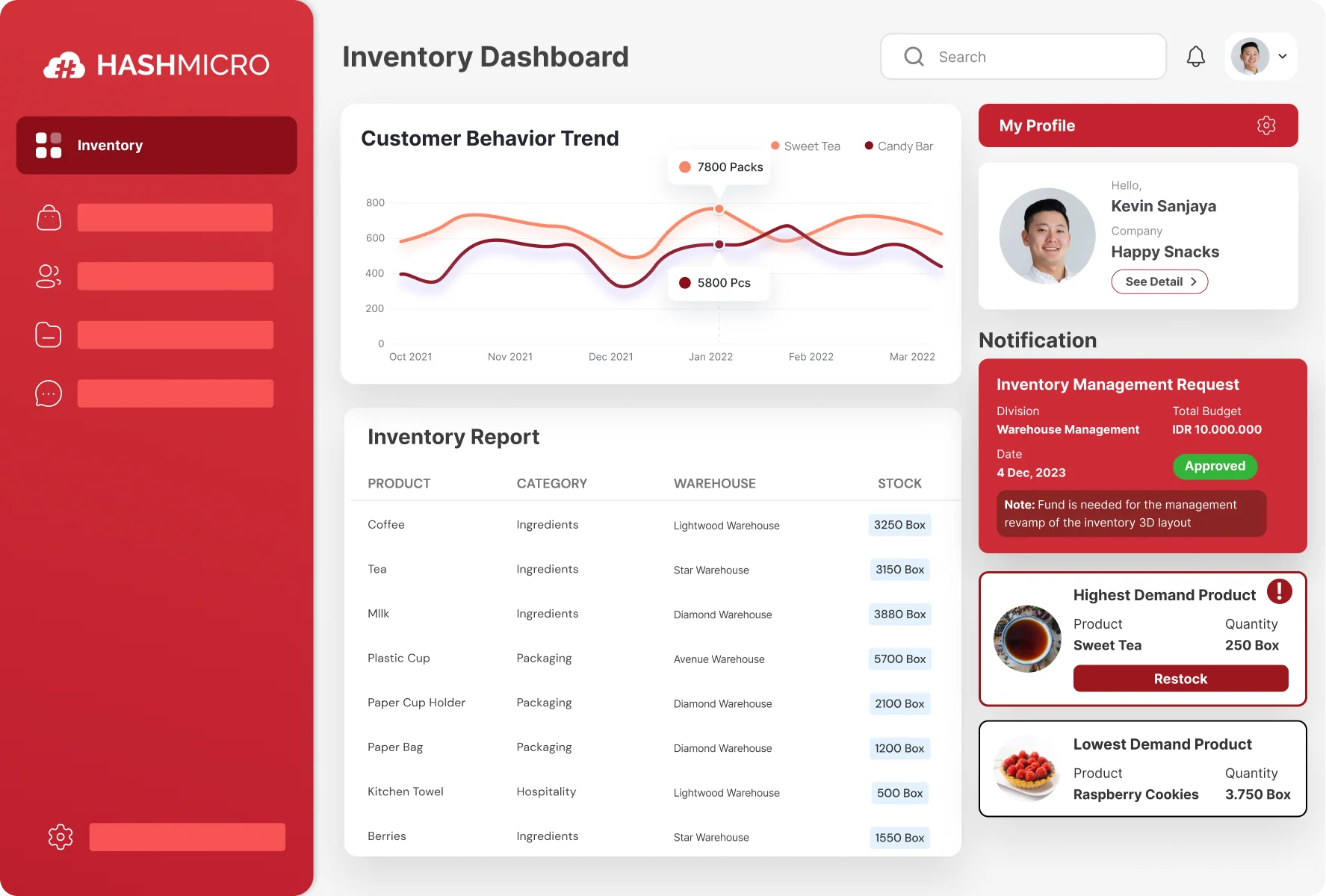Have you ever wondered how businesses in the Philippines manage to offer a diverse range of products without bearing the cost and burden of storing large quantities upfront? Or how local suppliers can grow their market presence without significant financial risks? The answer is consignment inventory—a strategy that allows both suppliers and retailers to share the responsibilities of stock management, making it a popular approach in the Philippine business landscape.
In this article, we’ll explore what consignment inventory is, its advantages, the common challenges faced by businesses in the Philippines, and the best practices for managing consigned goods effectively. By the end, you’ll understand how this model can help both retailers and suppliers optimize inventory and increase sales in the local market.
What is Consignment Inventory?
Consignment inventory is a system where the supplier retains ownership of goods until the retailer sells them. The retailer does not pay for the goods upfront, which reduces their financial burden. At the same time, the supplier benefits from broader distribution and potential sales. This arrangement is particularly useful in industries with unpredictable or seasonal sales, allowing retailers to stock more items without overextending their resources.
Here’s a quick comparison to clarify the difference between consignment inventory and traditional inventory models:
- Traditional Inventory: The retailer buys goods from the supplier upfront and owns the stock once the transaction is complete.
- Consignment Inventory: The supplier retains ownership of the goods, and the retailer only pays for what is sold.
Key Elements of the Consignment Inventory Model
Successful consignment partnerships rely on precise inventory control management, which involves continuous tracking of stock levels, sales performance, and returns. This ensures both the consignor and consignee have clear insights into the flow of goods and can maintain accurate records.
At the heart of the partnership is a contract that outlines the critical terms of the agreement, including:
- Commission structure: Details if the retailer will earn a commission and, if so, the percentage of revenue they’ll keep for each sale.
- Consignment period: Specifies the timeframe within which the retailer must sell or return the unsold items to the supplier.
- Payment conditions: Defines when and how the retailer will transfer payments to the supplier for goods sold, including the preferred method and payment intervals.
To handle the complexities of modern consignment practices, businesses often rely on specialized software. These tools help streamline everything from inventory tracking to managing supplier relationships and financial transactions, offering scalable solutions that can enhance efficiency and precision for businesses of all sizes.
Key Benefits of Consignment Inventory
The consignment inventory model provides significant advantages for both suppliers and retailers. The main appeal lies in how it distributes the risk, making it a mutually beneficial arrangement.
Benefits for Suppliers:
- Expands product reach without requiring upfront payment from retailers.
- Increases the likelihood of sales by placing products in multiple locations.
- Allows suppliers to test new products and gauge market demand.
- Retains control over inventory until the goods are sold, reducing financial loss from unsold goods.
Benefits for Retailers:
- Reduces financial risk since they don’t have to buy goods upfront.
- Enables offering a wider variety of products to customers without tying up capital.
- Helps in adapting to market demand by adjusting stock levels with minimal financial impact.
- Frees up capital for other business operations, allowing smaller retailers to remain competitive.
These benefits make it clear that consignment inventory is a win-win for both suppliers and retailers. But before you jump in, it’s crucial to understand some common challenges you may face.
Common Challenges in Consignment Inventory
While the consignment inventory model is beneficial, it does come with its own challenges that businesses must navigate. The main challenges include:
- Balancing risk and responsibility: Suppliers bear the cost of unsold goods, while retailers manage the goods in-store, which can lead to confusion if roles aren’t clearly defined.
- Accurate demand forecasting: If demand fluctuates, retailers may end up with excess or unsold stock, leaving suppliers to handle the returns.
- Managing unsold goods: Retailers may face difficulties in managing stock, as overstocking leads to wasted space, and understocking results in missed sales opportunities.
Overcoming these challenges requires strong collaboration and clear communication between suppliers and retailers. Although they may seem tricky, having solid management strategies in place will help you handle them smoothly. Let’s see how to manage consignment inventory effectively.
How to Manage Consignment Inventory Effectively

To manage consignment inventory effectively, businesses need the right tools and strategies in place. Here are the key steps:
- Automate replenishment: Invest in automated systems that replenish inventory such as MOQ to avoid stockouts and ensure products are always available.
- Build strong supplier-retailer relationships: Regular communication ensures that both parties are aware of stock levels, sales performance, and any potential issues.
- Use consignment inventory management software: This allows businesses to track sales and stock levels in real-time, helping both suppliers and retailers stay updated.
With the right tools and clear communication, businesses can efficiently manage their consignment inventory. Now that we’ve covered the essentials, let’s move on to best practices that will optimize your consignment strategy.
Best Practices for Consignment Inventory Management
To truly optimize your consigned inventory, following best practices is essential. Here’s how you can do that effectively:
- Create transparent contracts: Clearly define the roles, responsibilities, and payment terms between suppliers and retailers. This helps prevent misunderstandings and ensures smoother operations from the start.
- Review inventory performance regularly: By analyzing sales trends and adjusting stock levels, you can avoid the common pitfalls of overstocking or understocking, keeping your inventory lean and efficient.
- Leverage inventory management software: Managing consigned inventory becomes much easier when you have the right tools in place. A comprehensive solution like HashMicro’s Cloud Inventory Software allows you to track stock in real-time, automate replenishment, and ensure accuracy at every stage. Streamline your operations while gaining full visibility into your inventory performance.
To see how HashMicro’s inventory management software can fit your business needs and budget, check out the pricing options. Click the banner below for more details on pricing schemes tailored for your business.
How HashMicro’s Software Can Simplify Consignment Inventory Management

Managing consignment inventory manually often leads to common problems like inaccurate stock records, delays in responding to supply and demand changes, and inefficient use of resources.
Incorporating inventory aging analysis can help address these issues by providing insights into stock movement and ensuring better control over inventory.
This is where HashMicro’s Inventory Software steps in, streamlining your consignment inventory process and taking the hassle out of managing stock:
- Automated Inventory Tracking: Say goodbye to manual stock counts. With HashMicro’s software, your inventory is tracked in real-time, automatically adjusting for every sale, return, or purchase. This ensures accuracy in stock levels and helps you avoid overstocking or stockouts.
- Real-Time Data Integration: Stop relying on outdated spreadsheets. HashMicro’s software instantly updates inventory, sales, and stock movements, enabling you to make quick, informed decisions and adapt to changes in demand.
- Multi-Location Management: Whether your consignment inventory is stored in one location or multiple sites, HashMicro’s system gives you a complete, unified view of your stock across all locations. This makes it easier to optimize inventory levels at each site.
- Smart Reordering System: Automate your reorder points to ensure you always have the right amount of consigned stock, eliminating guesswork and helping to prevent excess inventory or shortages.
- Custom Reports and Analytics: Gain valuable insights into your inventory performance with custom reports. Use this data to refine your consignment inventory strategies, improve efficiency, and maximize profits.
Ready to take your consignment inventory management to the next level? Try HashMicro’s Inventory Software for free and discover how it can help you save time, reduce costs, and manage your inventory like a pro!
Conclusion
The consignment inventory model offers businesses a flexible and risk-sharing approach to managing stock. Both suppliers and retailers can benefit from increased sales, reduced financial risk, and better inventory optimization. With clear communication, the right tools, and best practices, consignment inventory can help businesses succeed in today’s competitive market.
To help you streamline your consignment inventory management, consider HashMicro’s Inventory Software, designed to provide comprehensive solutions for inventory tracking, real-time data, and automation. Ready to see how it can transform your business? Get a free demo today and experience firsthand how our ERP system can simplify your operations and maximize your profits.
Frequently Asked Questions
-
What is a consignment stock contract?
A consignment stock contract is an agreement between a supplier and a retailer outlining terms such as ownership, payment, and duration. The supplier retains ownership of the goods until they are sold by the retailer.
-
Do you include consignment in inventory?
Consignment goods are not included in a retailer’s inventory until sold. The supplier retains ownership, so the retailer doesn’t list them in their inventory records until the sale occurs.
-
How do you handle consignment inventory?
Handling consignment inventory involves regular tracking of stock levels, sales, and returns. Using inventory management software simplifies this process, ensuring both parties have accurate, real-time data.
-
What are two reasons some industries have inventory on consignment?
Industries use consignment inventory to reduce financial risk for retailers and test new products without committing to large purchases upfront. This allows flexibility and reduces excess stock issues.






































